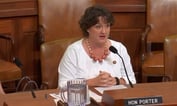Employees who earn less than $150,000 benefit the most from tax incentives they receive by putting money away in their employer-sponsored retirement plans.
Plan sponsors also receive a small benefit from the tax incentives, so why eliminate tax incentives as part of tax reform?
Those were the two big points made by Brian Graff, executive director and CEO of the American Society of Pension Professionals & Actuaries, in a letter to the House Ways and Means Committee’s Pensions and Retirement Tax Reform Working Group.
The Obama White House has proposed doing away with these incentives after individuals are able to stash away several million to help balance the federal government’s budget. But as Graff pointed out, being able to make pre-tax contributions to a retirement account doesn’t mean people won’t pay taxes on that money later.
Graff, eching a point he made at the time the proposal was unveiled earlier this month, said eliminating tax incentives could have a major consequence for small-business owners who offer retirement plans. Many might stop offering such plans, he said, because there is no incentive for them to do it. As has been documented for years, because defined benefit pension plans are going away, more people are relying on workplace-sponsored plans for their savings.
Any drop in tax incentives could have a ripple effect across the industry, Graff and others have said.
In his letter, Graff said that access to a retirement plan at work is the key to successfully preparing for retirement, so any modifications to the current incentives should be evaluated based on whether they will encourage more businesses to sponsor retirement plans for their employees.
“The current tax incentives for employer-based retirement programs have been very efficient at promoting retirement security for millions of working Americans,” he wrote. “If increasing retirement and financial security is the goal, increasing the availability of workplace savings is clearly the way to get there.”
ASPPA has found that more than 70 percent of workers earning between $30,000 and $50,000 a year will participate in a workplace plan, though fewer than 5 percent will save through an IRA on their own.








 April 22, 2013 at 12:34 PM
April 22, 2013 at 12:34 PM










